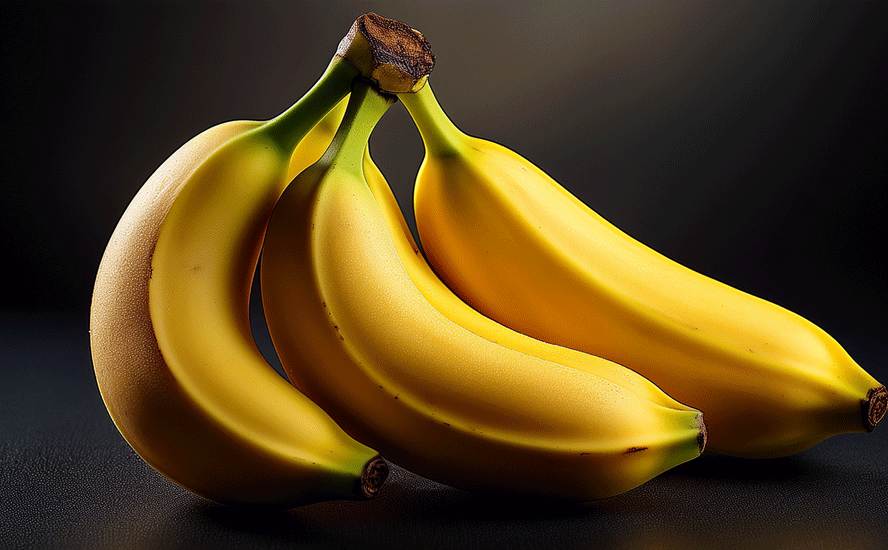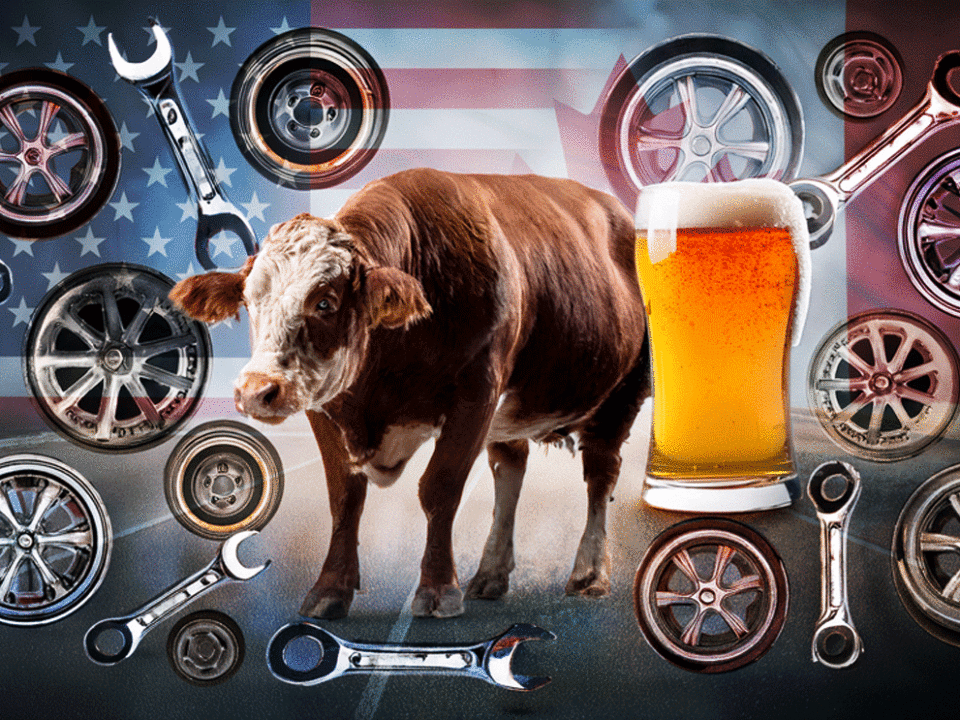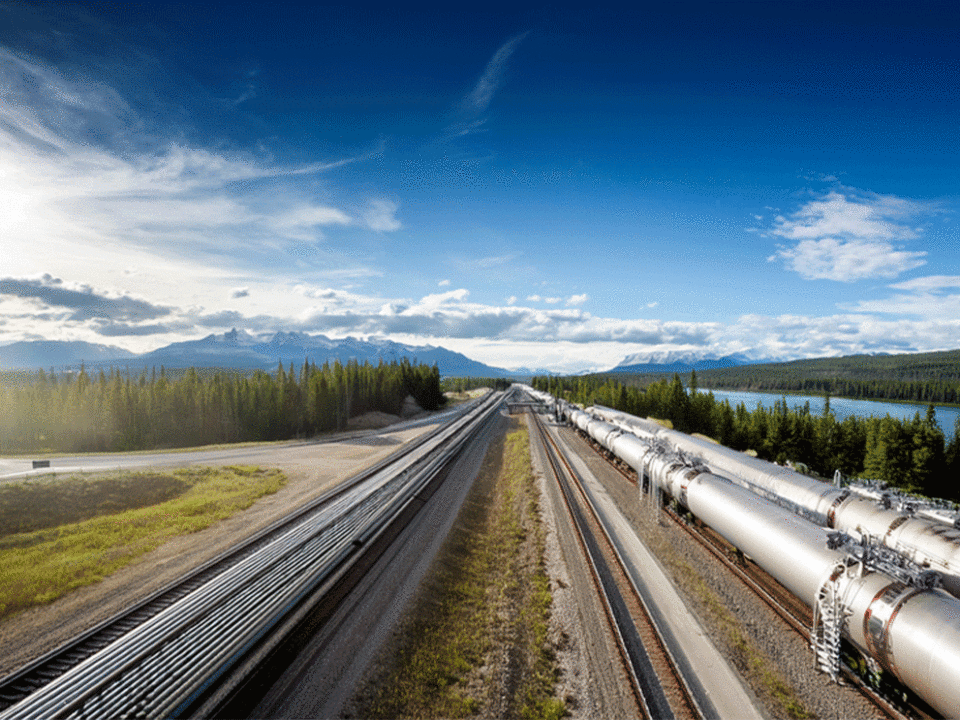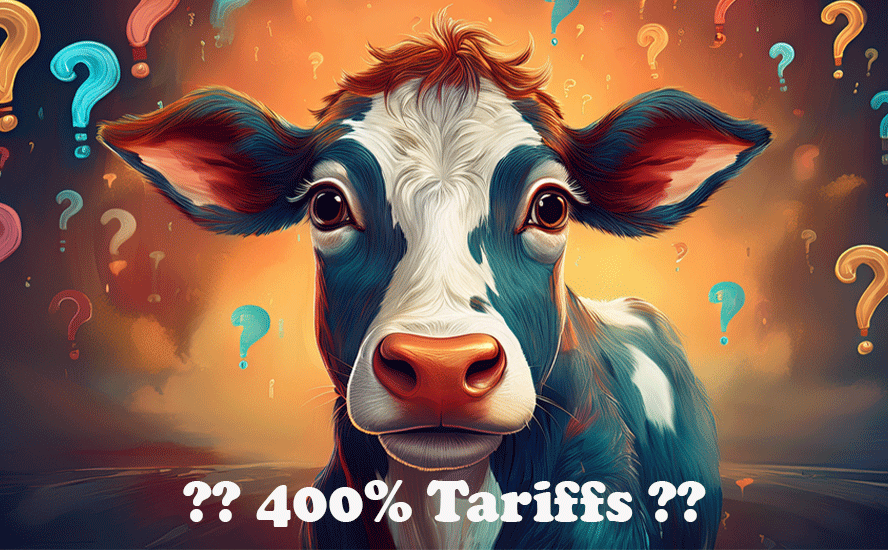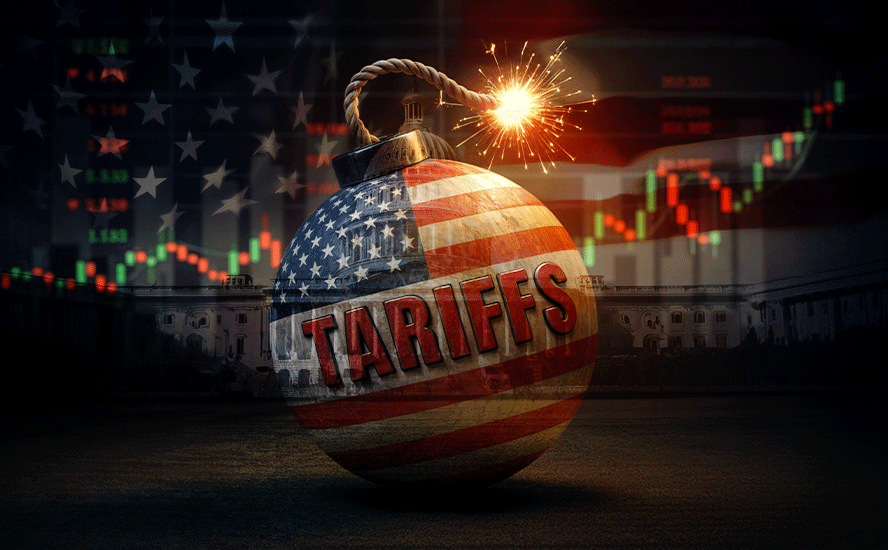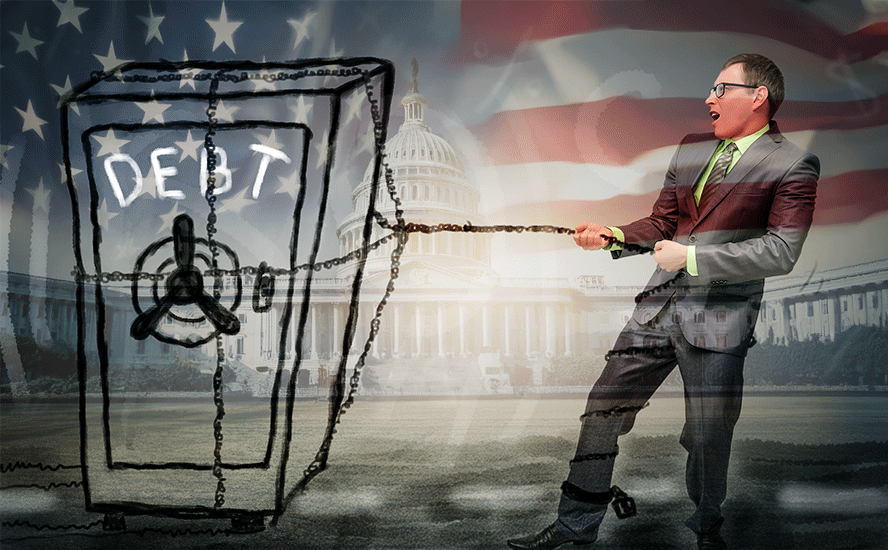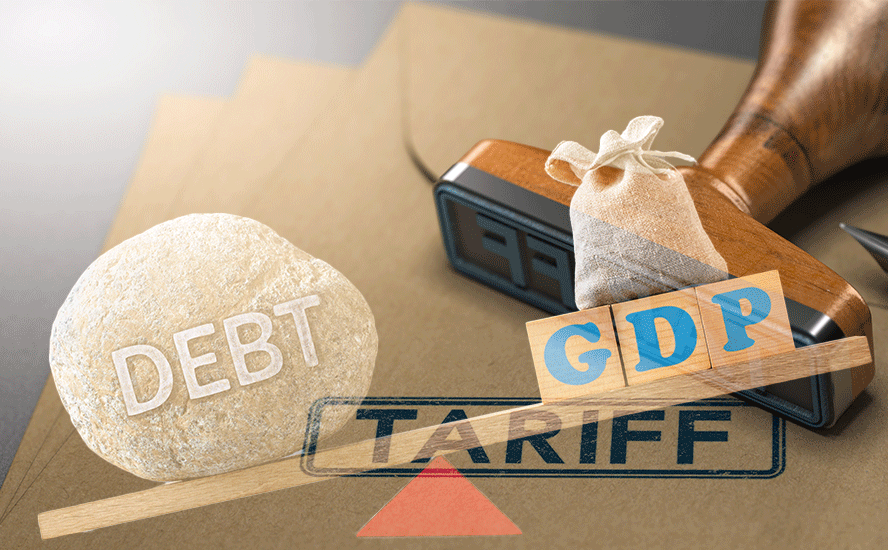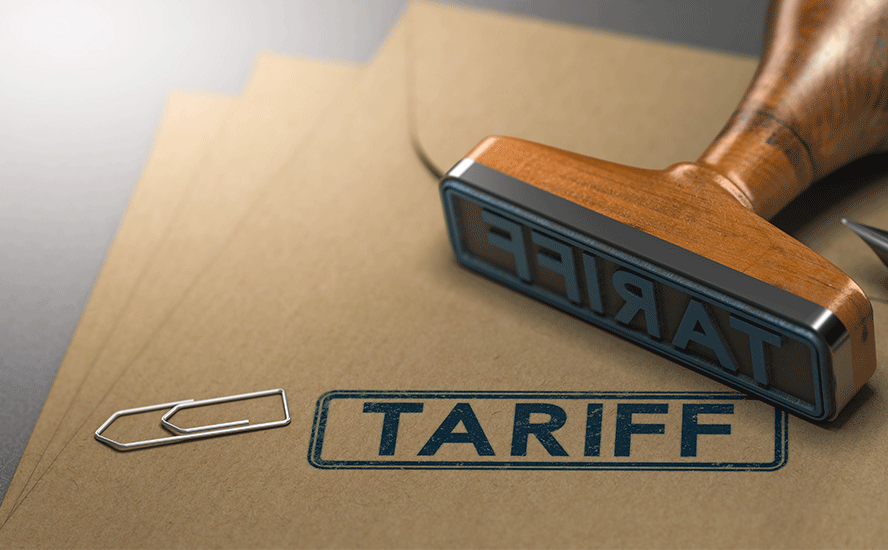Rising food prices threaten social stability
2020.09.26
Has the bill for your weekly shop gone up? If so you’re not alone.

One of the most striking effects of the coronavirus has been an increase in the prices of grocery items including meat, fruit and vegetables, due to supply chain disruptions.
As the virus continues to grind the daily lives of Canadians and Americans, processing plants have shut down, grocery stores are struggling to keep their shelves stocked, and farmers have had to grapple with labor shortages and produce gluts.
But food insecurity was already a problem before the coronavirus changed the way we shop for groceries (ubiquitous hand sanitizer, face coverings, plexiglass shields, social distancing markers) and altered our dining-out habits (less meals out, more cooking at home).
Frequent droughts and water shortages in food-producing regions have led to massive food price increases, hunger, and ultimately, social upheaval. In Egypt, 19% food price inflation sparked “bread riots” that led to the fall of its president. In Syria, a severe drought in 2006 drove farmers to abandon their crops and flock to the cities, helping trigger a civil war.
In this article we are taking a deep dive into food prices – how the coronavirus has impacted groceries, what are some of the other factors behind food price inflation, and how might it play out in the weeks and months ahead.
Food inflation
Earlier this month, the UN’s Food and Agriculture Organization (FAO) reported global food prices rose for the third straight month, in August hitting their highest levels since February. The FAO says the increases are due to firmer demand and a weaker dollar – when the US dollar falls, commodity prices prices in USD generally go up. And while there has not been any pressing food shortages, farms have been hit hard, with the pandemic upending supply chains and curbing labor movements, in particular migrant workers needed to work the fields.
China’s food prices in August jumped 11.2% compared to August 2019, on the back of high pork prices. An outbreak of African swine fever had decimated the country’s hog herds. Vegetable prices rose 6.4% compared to July, as a result of hot and rainy weather, and eggs were 11.3% more expensive due to season demand outpacing low inventories.
Canadian food inflation is currently 3.4% and could reach 4% by the end of the year – close to double the normal 1.5-2%. The Financial Post quotes food analyst Sylvain Charlebois saying that the industry’s costs to produce, process, and distribute are rising. As grocers implement physical distancing, personnel turnover, training, double shifts, the use of personal protective gear, equipment modifications, and an increase in the use in automation, their costs are set to go up.

“To get food to market, companies across the supply chain will need to charge more, full stop,” Charlebois noted.
In a normal economy at or nearing full employment, and hovering around an ideal 2% inflation, a hike in food prices can be absorbed. The problem with the current situation is there are so many people left jobless or working less due to pandemic-related business closures or restrictions. This puts more people in a vulnerable place.
According to a May Stats Canada survey, one in seven, or 14.6%, of Canadians said they lived in a household where there was food insecurity in the past month. Food security is a measure of the availability of food and individuals’ ability to access it. In a similar survey done in 2017-18, just 10.5% said they were food insecure. The higher percentage amounts to an estimated 512,000 more Canadian households.
The Canadian government has kept the wolves from the doors of the most vulnerable in Canadian society through emergency aid programs like the CERB, but that program, which allocates $2,000 per month to applicants who qualify, is scheduled to end this month.
In the United States, the price of groceries shot up 2.6% in April – the largest one-month pop since February 1974, according to a Labor Department report quoted by CNBC.
However, the food price hikes buck the broader trend of falling prices in the US amid the pandemic. Although the food component of the Consumer Price Index rose 4.5% in the 12 months prior to July, the CPI gained only 0.6% during the same period, with higher food prices offset by falling energy prices, which tumbled 12.6%.
Among the grocery store items with the biggest price increases, beef and veal were up 25.1%, eggs gained 12.1%, the price of pork rose 11.8% and poultry was up 8.7%. In general, US vegetable prices were less affected, apart from potatoes which soared 13.3% and tomatoes which climbed 8.4%.
Moody’s Analytics cites three main reasons for the rise in US food prices: rising demand, with people stocking up on food because they want to limit trips to the store; a shift from eating at restaurants/ schools, to cooking and dining at home/ bringing packed lunches; and the closure of several meat processing facilities this year due to covid-19 outbreaks.

According to a May 26 column in Vancouver’s The Georgia Straight, the cost of food is increasing almost four times faster than any other durable goods in the Canadian economy, and higher grocery prices are likely here to stay:
COVID-19 is making everything more expensive to produce, process, distribute, and sell, with producers having to implement things like new cleaning protocols, higher wages in some cases, and e-commerce infrastructure.
Ditto for the US, where as mentioned, the cost of food bought to eat at home has skyrocketed the most in 46 years. According to ABC News, analysts caution that meat prices in particular could remain high as slaughterhouses struggle to maintain production levels while implementing procedures intended to keep workers healthy.
Supply chain disruptions
An alarming sign of the pandemic when it first hit, was visible to every single grocery shopper: empty shelves. The uncertainty of covid-19 caused a run on certain items – like toilet paper and meat. Many feared that breaks in the grocery supply chain would result in food shortages.
Forget about higher prices; the coronavirus put a lot of people in survival mode.
Assurances from grocery giants like Loblaws, that supplies would flow unimpeded, didn’t prevent widespread hoarding, as residents confronted the reality of being confined to their homes for weeks, through government-imposed “shelter in place” orders.
Food producers worried about how international travel restrictions might prevent migrant workers from traveling out of their home countries, places like Mexico and the Caribbean, to work at fruit/ vegetable farms and slaughterhouses of developed countries.
The problem was particularly acute in Europe, where locked-down seasonal workers were prevented from traveling to Germany to pick asparagus or France to harvest strawberries. The fear was that crops would be left rotting in the fields. French farms were reportedly missing 200,000 workers, prompting a call from leaders for furloughed city dwellers to head to the countryside. Authorities in Britain, Germany, Spain, Belgium and Italy issued similar calls.
Back in Canada, a lack of migrant agricultural workers, combined with the closing of restaurants, caused a steep drop in demand for certain foods. Meanwhile large amounts of foods like potatoes weren’t processed and spoiled. Potato growers asked for federal government help because demand for french fries all but dried up, Global News said.
Supply chain disruptions brought about by covid-19 were the last thing farmers in the United States needed, given they were already suffering from countervailing duties imposed by China as part of the US-China trade war.
Earlier this month during a re-election rally in rural Wisconsin, President Trump announced an additional $13 billion in coronavirus relief for US farmers and ranchers. The funds are on top of $16 billion put aside for the Coronavirus Food Assistance Program.
Reported via Successful Farming, farm subsidies will set a record this year, But cash receipts from the sale of crops and livestock would be the lowest in a decade. The FAPRI think tank says farm income could plunge in 2021 when the stopgap trade and coronavirus programs expire.
In a letter to Congress, 40 farm groups asked for an immediate infusion of funding for the USDA so it will not run out of money in the weeks ahead.
The Canadian government announced a coronavirus aid package aimed at the agri-food sector, including $77 million for food processors to keep workers safe, $125 million to help cattle and hog producers, and $50 million on a surplus food purchasing program, Maclean’s reported.
A silent tsunami
Even before covid-19, a “perfect storm” of circumstances was setting the stage for possible massive food price increases, food riots, supply chain disruptions, country versus country water disputes and increasing numbers of hungry people.
Consider:
- Record-setting droughts and worldwide abnormal weather
- Exploding populations and eastern diets shifting to a western style one
- Worldwide crop failures
- Diminishing world food stocks
- Income deflation
- Flooding
- Freak cold snaps
- Aquifers are being depleted faster than natural refreshment rates
- Relocation of produce for energy production – eg. corn for ethanol
- Desertification – new deserts are growing at a rate of 51,800 square kilometers per year. As an example Nigeria (Africa’s most populous country) is losing almost 900,000 acres of cropland per year to desertification because of increased livestock foraging and human needs
Harvests around the world are going to be smaller, the world’s food inventories are going to be lower while at the same time global demand for basic food staples – and simultaneously a richer diet containing more meat – is at an-all time high and growing.
The UN calls the global food crisis a “silent tsunami.”
For example Saudi Arabia was once the world’s eighth largest wheat grower but grain production ended in 2016. The Saudis feared an embargo on grain after the 1972 oil embargo so they decided to grow their own. They farmed the desert and pumped their aquifer dry.
In A Harsh Reality I wrote about the Green Revolution and its effects on food production.
The modern agricultural complex spawned by the Green Revolution may have allowed us to grow more food, but dependence on high-cost, industrial farming extracts an extreme toll. To grow new seed varieties, new technologies were introduced, all bad for the environment – chemical fertilizers, pesticides and the drilling of thousands of wells for irrigation.

Moreover, narrowly focusing on increasing production, as the Green Revolution did, cannot alleviate hunger because it failed to alter three simple facts:
- An increase in food production does not necessarily result in less hunger. If the poor don’t have the money to buy food, increased production is not going to help them.
- A narrow focus on production ultimately defeats itself as it destroys the base on which agriculture depends – topsoil and water.
- To end hunger once and for all, we must make food production sustainable and develop secure distribution networks of needed foodstuffs.
Beyond land-based agriculture, world fisheries are in a state of collapse. Between plagues of jellyfish, overfishing, nutrient pollution, bioaccumulation of toxics in marine mammals, carbon emissions turning our oceans acidic, the oceans’ phytoplankton declining by about 40% over the past century, dead zones, garbage patches, increasing ocean temperatures and changing currents, our entire marine food chain seems to be in peril.

A story in IRIN, a blog about environmental and other crises, describes the “perfect storm” that is occurring in the oceans due to overfishing and climate change. The result could mean a dramatic decline in fish stocks, with the most serious effect being malnutrition in poor countries in tropical climates that depend on fishing as a protein staple. Nearly 3 billion people rely on fish as a major source of protein.
Climate change
The ongoing threat from climate change’s impact on agriculture and fishing isn’t about the slow, almost imperceptible changes caused by a gradual shift in our weather patterns. The greatest worry is that climate change might intensify already extreme events.
This seems to be happening today; witness the massive wildfires in California and Australia, Hurricane Laura which barreled into the US Gulf Coast, and a “derecho” wind storm that left a trail of destruction from eastern South Dakota to western Ohio.
And with extreme weather exacerbated by climate change, an already stressed agricultural industry (by loss of arable land, shortage of fresh water for irrigation, increasing human population, staple food crops used for bio-fuel production, increasing energy costs and developing countries changing diets) is increasingly having a more difficult time feeding and clothing the world.
Climatologists believe that the ongoing climate change the Earth is experiencing, will increase the frequency and severity of extreme weather events.
Food security risks
The world’s developing economies mostly rely on food imports to sustain themselves. On average their citizens spend a much larger percentage of their wages on food than do their counterparts in developed nations. Some published estimates are as high as 50 to 60% of income going towards food.
“As the coronavirus crisis unfolds, disruptions in domestic food supply chains, other shocks affecting food production, and loss of incomes and remittances are creating strong tensions and food security risks in many countries,” The World Bank said earlier this month.
CNBC quotes a survey of farmers, 70% who said their ability to afford food was impacted as they had less income than usual in the prior four months. During July in Africa and Indonesia, farmers growing cocoa, coffee, sesame and cotton experienced shortages in basic food and nutrition as a result of fluctuating prices, movement restrictions and insufficient stocks.
The rising cost of survival
Socio-economic turmoil – lawlessness, poverty, lack of adequate medical facilities/ attention, low to no employment, low wages, disease, no clean drinking water or water for irrigation, and shortages of food or unaffordable food – can all cause socio-economic pressure to build in many countries that were once stable environments for investment.
Our agriculture system is concentrated on producing a very few staple crops – there is a very serious lack of crop diversity. Corn, wheat, rice and soy are the main staples and production is often-times half a world away from where the majority of the crop would be consumed. Taken together, this means if we get hit by a particularly bad harvest in one area, if a severe El Nino strikes, or more localized severe weather phenomena strikes, food supplies can get totally out of control in many countries.
Considering that the global food supply chain is weak (easily disrupted by viral outbreaks, weather, insurgency, stealing) and non-existent in many areas, you have a recipe for potential disaster in many parts of the world. When, not if, this food supply shortfall happens, for whatever reason, then almost any city, and almost any countryside, could be aflame with strikes, riots and civil disobedience.
It seems that the increase in the price of food is the straw that breaks the camel’s back. The real cause of angst is the rising cost of living being felt in developing (and some developed) countries. Many of these people, already living in poverty, are far less capable of bearing the increased costs of what is really just basic survival for themselves and their families. Yet this is the first group of people who are impacted by the coming unstoppable waves of inflation and real shortages – whether localized or temporary because of supply chain breakages or poor harvests.
Many North Americans must surely be included among these unfortunate individuals, owing to the unforgiving, indiscriminate effects of the coronavirus. In April, the low point of the pandemic’s economic fallout, the UN Human Rights Commission issued a news release stating that The poor in the United States are being hit hardest by the COVID-19 pandemic and the Government must urgently take additional steps to prevent tens of millions of middle-class Americans from being plunged into poverty.
“Low-income and poor people face far higher risks from the coronavirus due to chronic neglect and discrimination, and a muddled, corporate-driven, federal response has failed them,” said Philip Alston, the UN Special Rapporteur on extreme poverty and human rights.
In fairness, the federal government did roll out a record $2.2 trillion response aimed at helping people and businesses hurt by the pandemic. However millions of Americans have seen their temporary benefits either reduced or cut off. An additional $1 trillion relief package is stuck in Congress and unlikely to get passed before the election.
Meanwhile hundreds of thousands of Americans continue to file for unemployment benefits – 870,000 last week. States’ efforts to prevent fraud have reportedly delayed or disrupted some payments.
A lot of people are getting desperate. The Affordable Care Act, aka Obamacare, goes before the Supreme Court in November. A decision by the highest court in the land, now packed with conservative judges thanks to Trump, will affect the healthcare of millions of Americans, including those with pre-existing conditions.
As inflation takes hold – we are already seeing it in rising food prices – hundreds of millions of marginalized people, across all nations, will feel the extreme pinch of increased prices on their household budgets. But especially so in what those people need the most – water, food and clothing – the bare essentials necessary for survival.
Richard (Rick) Mills
aheadoftheherd.com
subscribe to my free newsletter
Ahead of the Herd Facebook
Legal Notice / Disclaimer
Ahead of the Herd newsletter, aheadoftheherd.com, hereafter known as AOTH.
Please read the entire Disclaimer carefully before you use this website or read the newsletter. If you do not agree to all the AOTH/Richard Mills Disclaimer, do not access/read this website/newsletter/article, or any of its pages. By reading/using this AOTH/Richard Mills website/newsletter/article, and whether or not you actually read this Disclaimer, you are deemed to have accepted it.
Any AOTH/Richard Mills document is not, and should not be, construed as an offer to sell or the solicitation of an offer to purchase or subscribe for any investment.
AOTH/Richard Mills has based this document on information obtained from sources he believes to be reliable but which has not been independently verified. AOTH/Richard Mills makes no guarantee, representation or warranty and accepts no responsibility or liability as to its accuracy or completeness. Expressions of opinion are those of AOTH/Richard Mills only and are subject to change without notice. AOTH/Richard Mills assumes no warranty, liability or guarantee for the current relevance, correctness or completeness of any information provided within this Report and will not be held liable for the consequence of reliance upon any opinion or statement contained herein or any omission. Furthermore, AOTH/Richard Mills assumes no liability for any direct or indirect loss or damage or, in particular, for lost profit, which you may incur as a result of the use and existence of the information provided within this AOTH/Richard Mills Report.
AOTH/Richard Mills is not a registered broker/financial advisor and does not hold any licenses. These are solely personal thoughts and opinions about finance and/or investments – no information posted on this site is to be considered investment advice or a recommendation to do anything involving finance or money aside from performing your own due diligence and consulting with your personal registered broker/financial advisor. You agree that by reading AOTH/Richard Mills articles, you are acting at your OWN RISK. In no event should AOTH/Richard Mills liable for any direct or indirect trading losses caused by any information contained in AOTH/Richard Mills articles. Information in AOTH/Richard Mills articles is not an offer to sell or a solicitation of an offer to buy any security. AOTH/Richard Mills is not suggesting the transacting of any financial instruments but does suggest consulting your own registered broker/financial advisor with regards to any such transactions
Legal Notice / Disclaimer
Ahead of the Herd newsletter, aheadoftheherd.com, hereafter known as AOTH.Please read the entire Disclaimer carefully before you use this website or read the newsletter. If you do not agree to all the AOTH/Richard Mills Disclaimer, do not access/read this website/newsletter/article, or any of its pages. By reading/using this AOTH/Richard Mills website/newsletter/article, and whether you actually read this Disclaimer, you are deemed to have accepted it.



